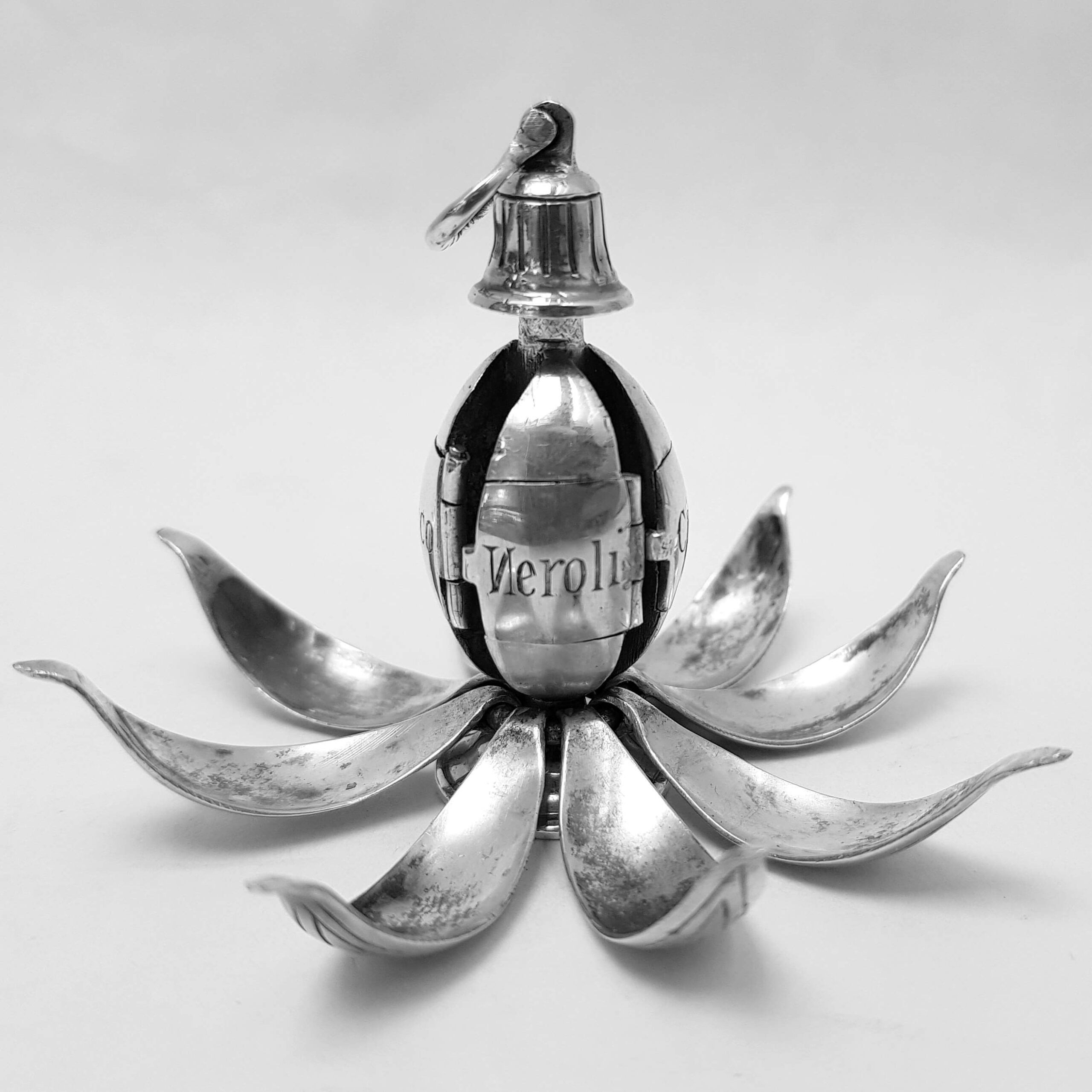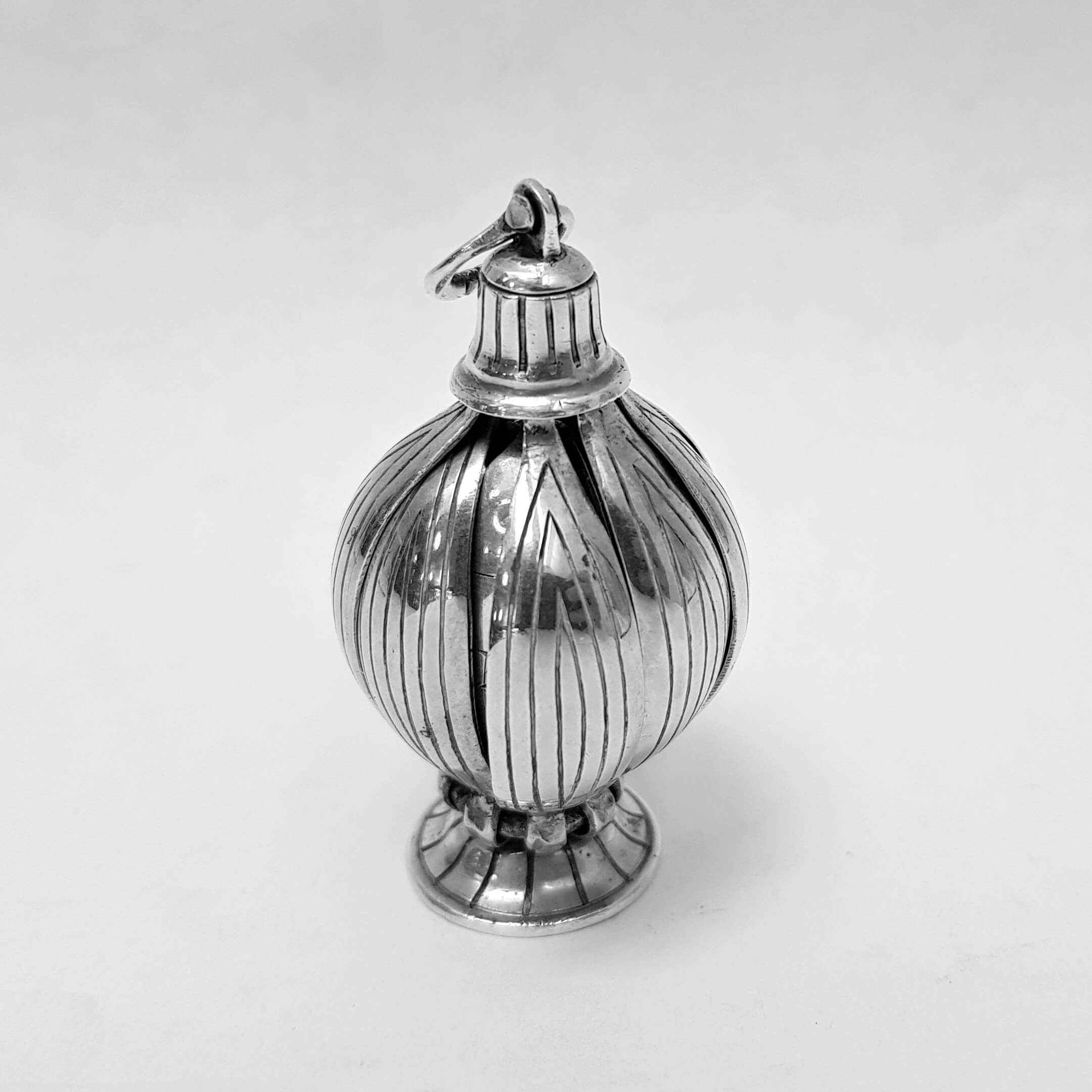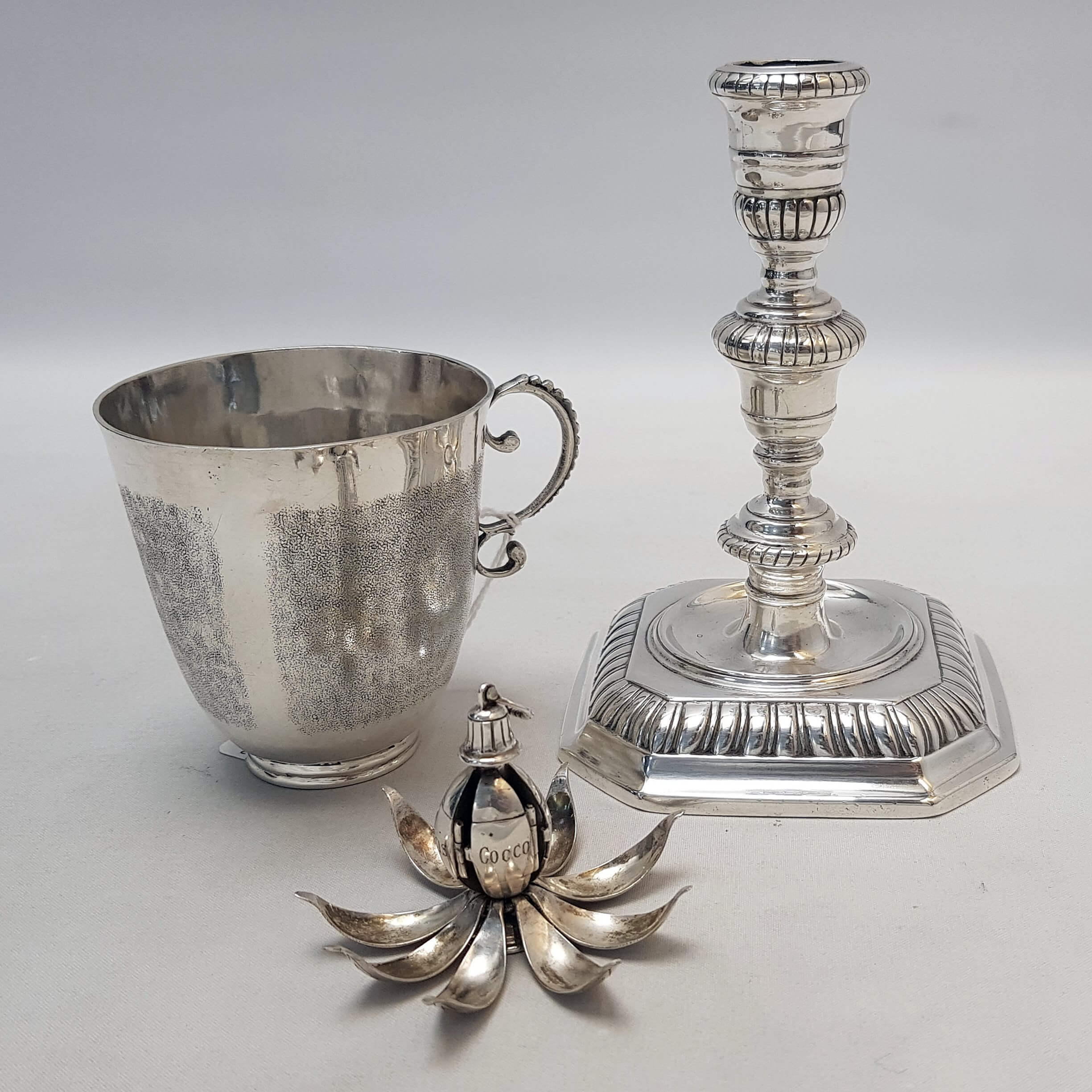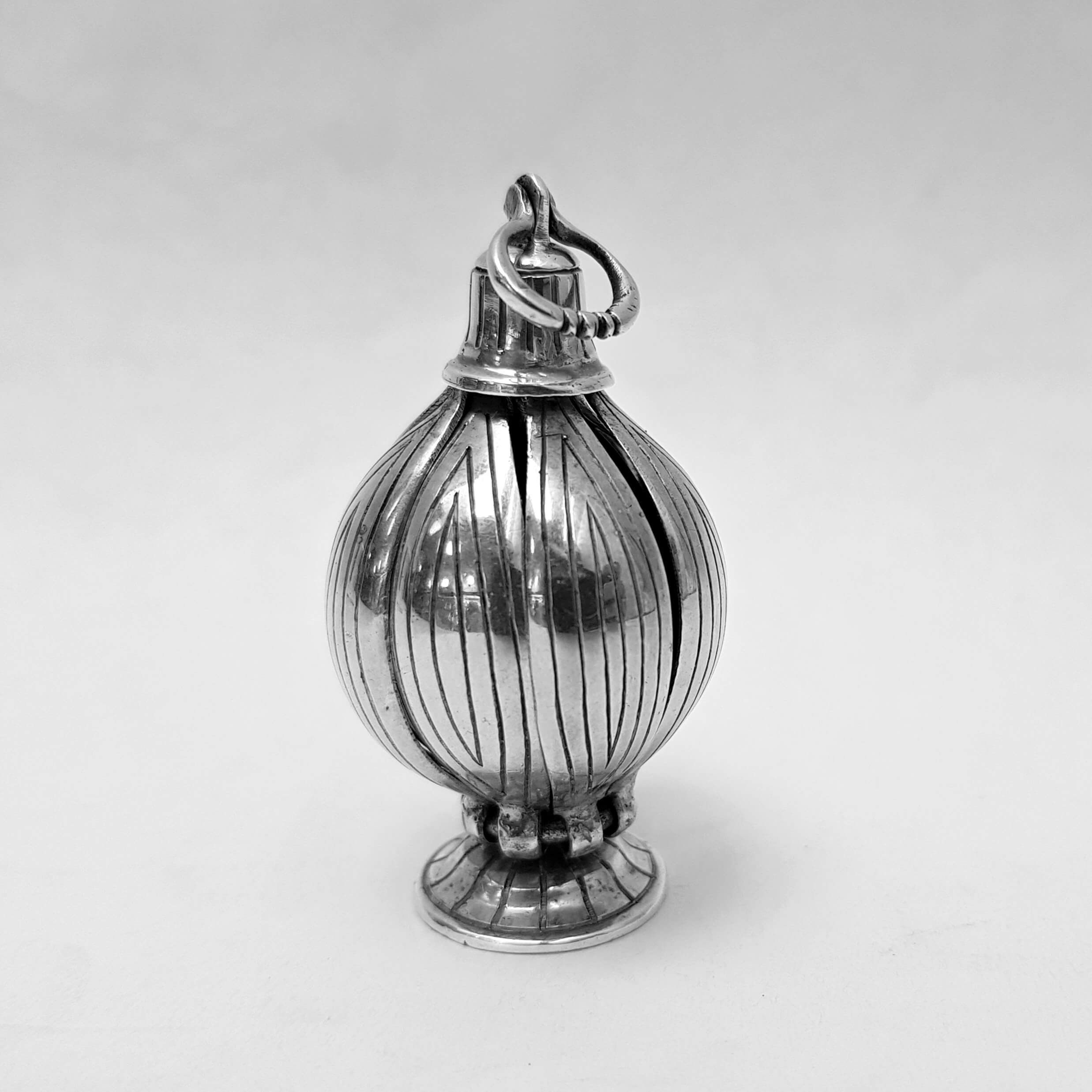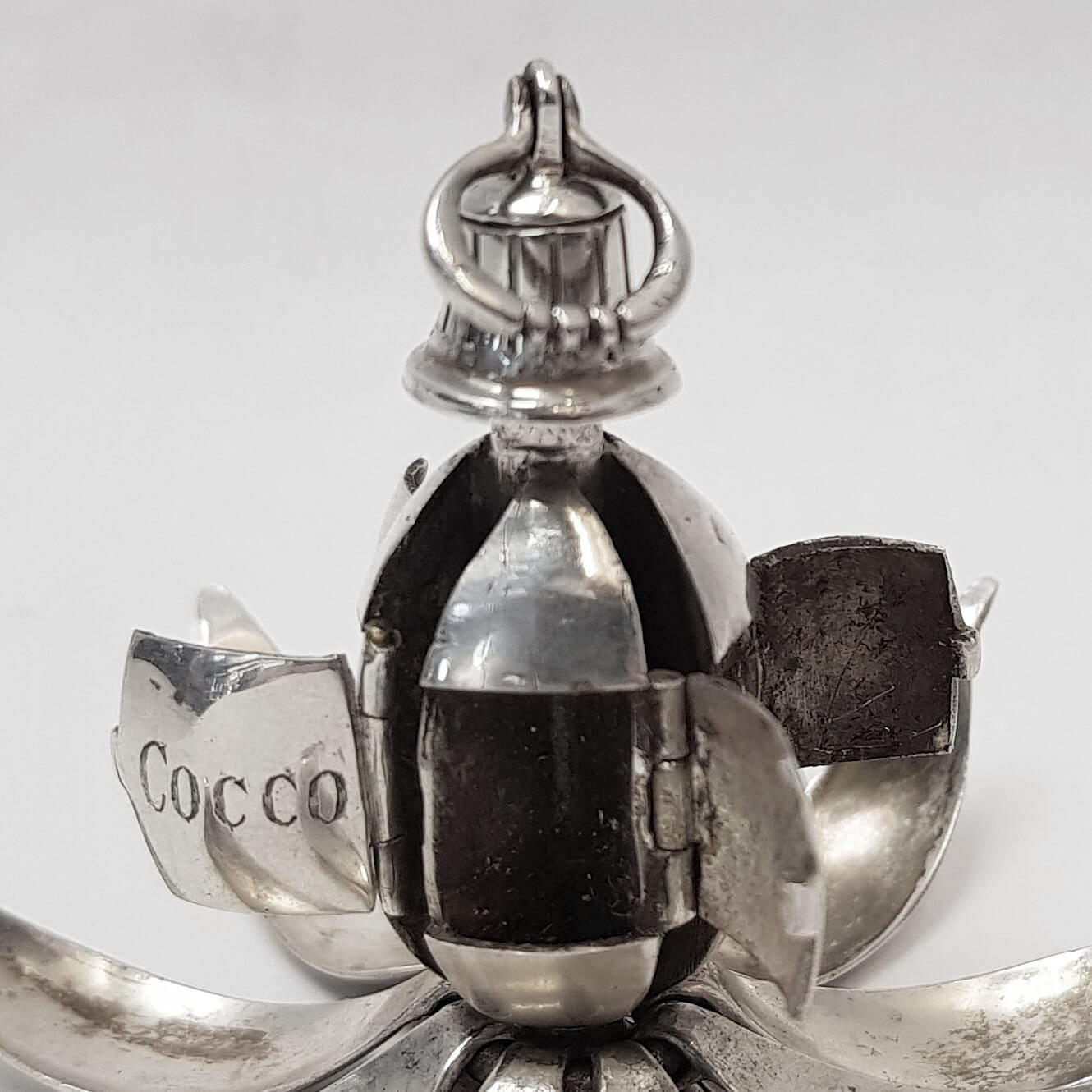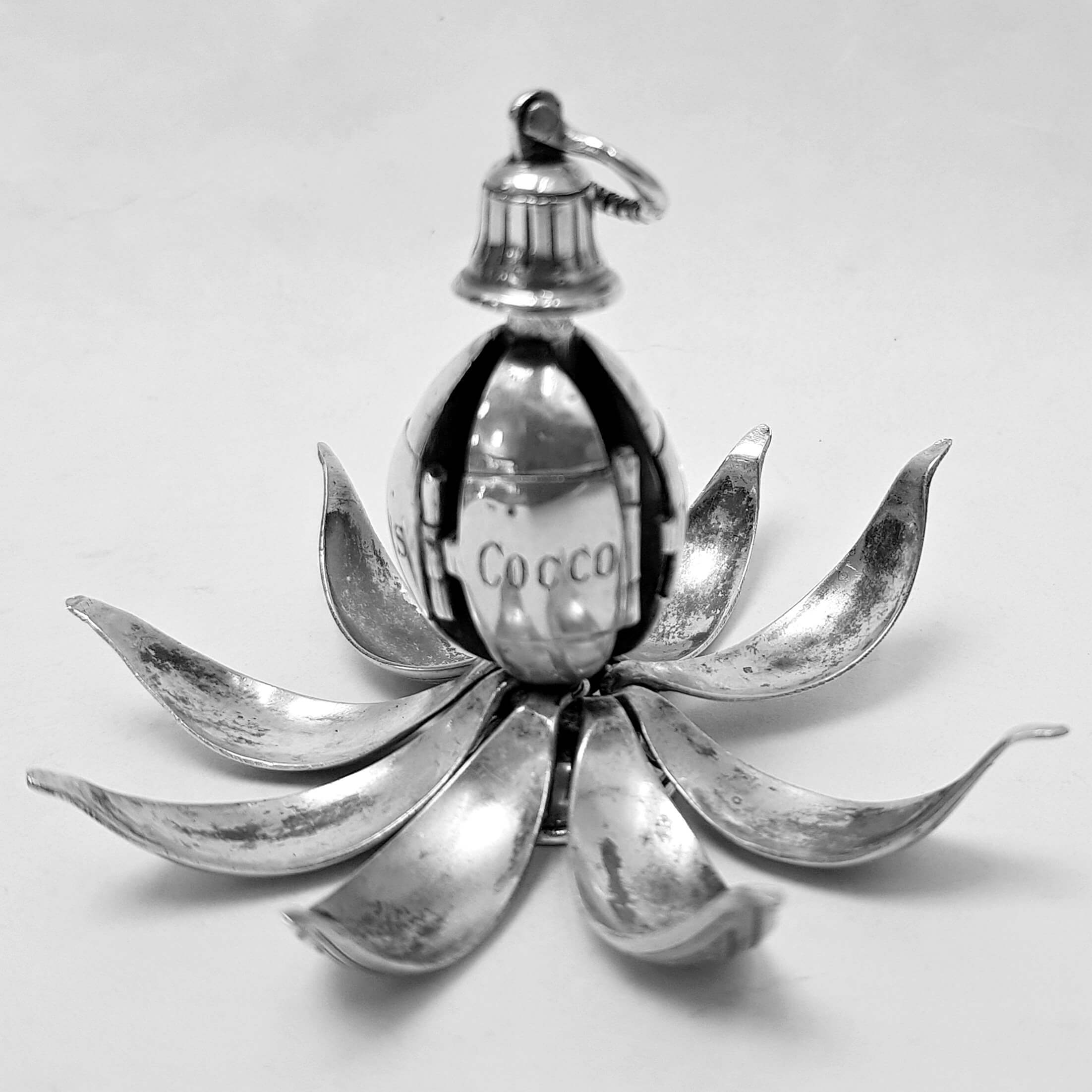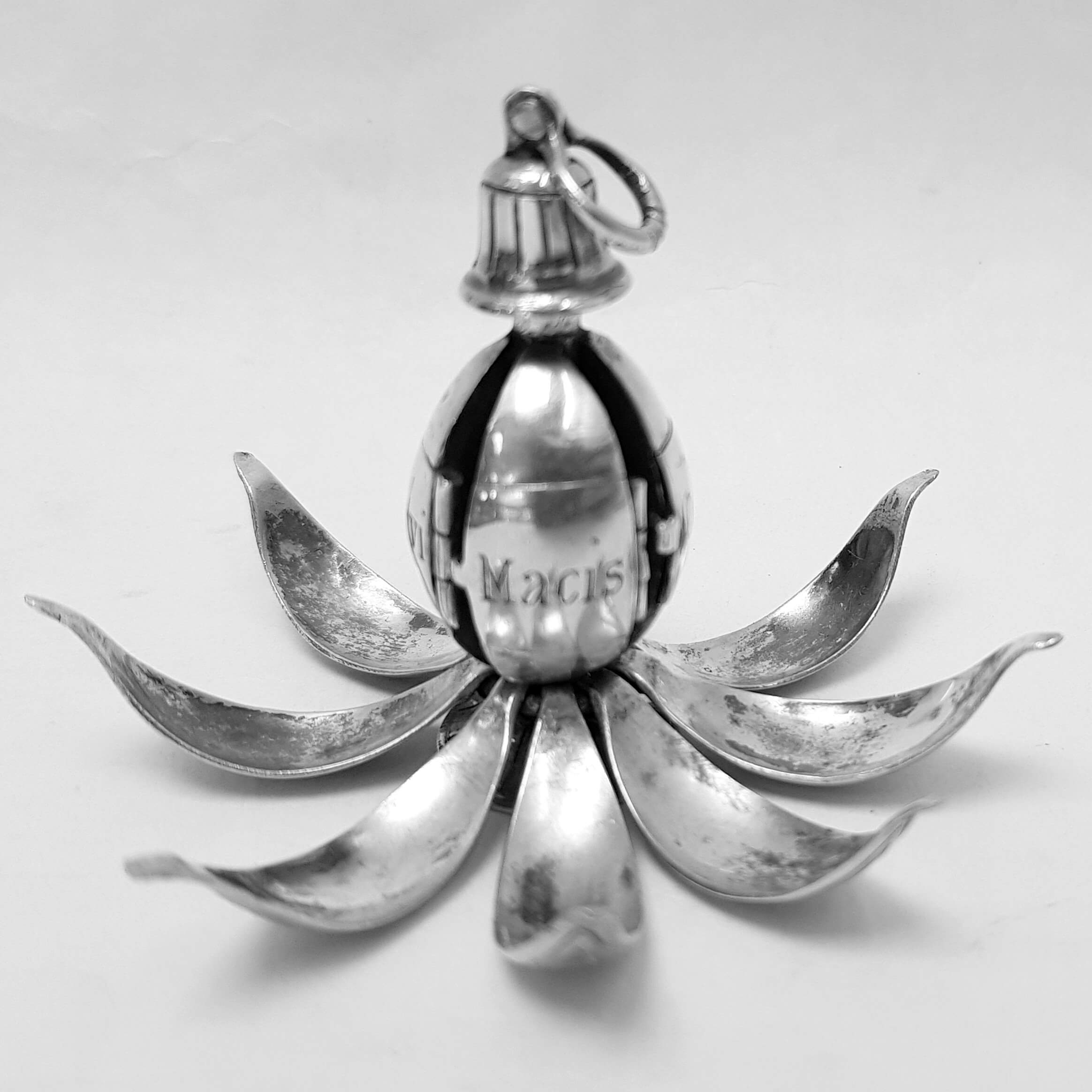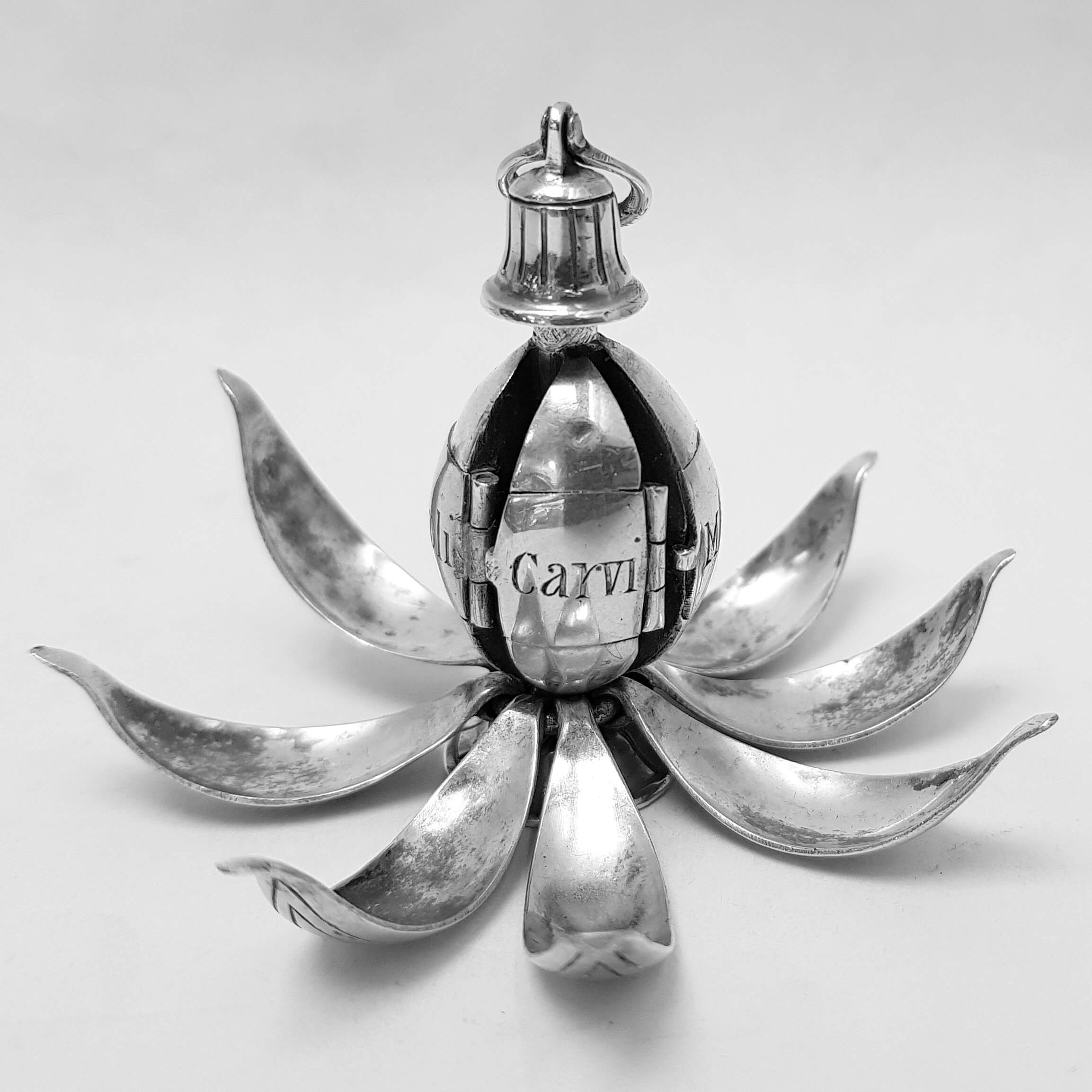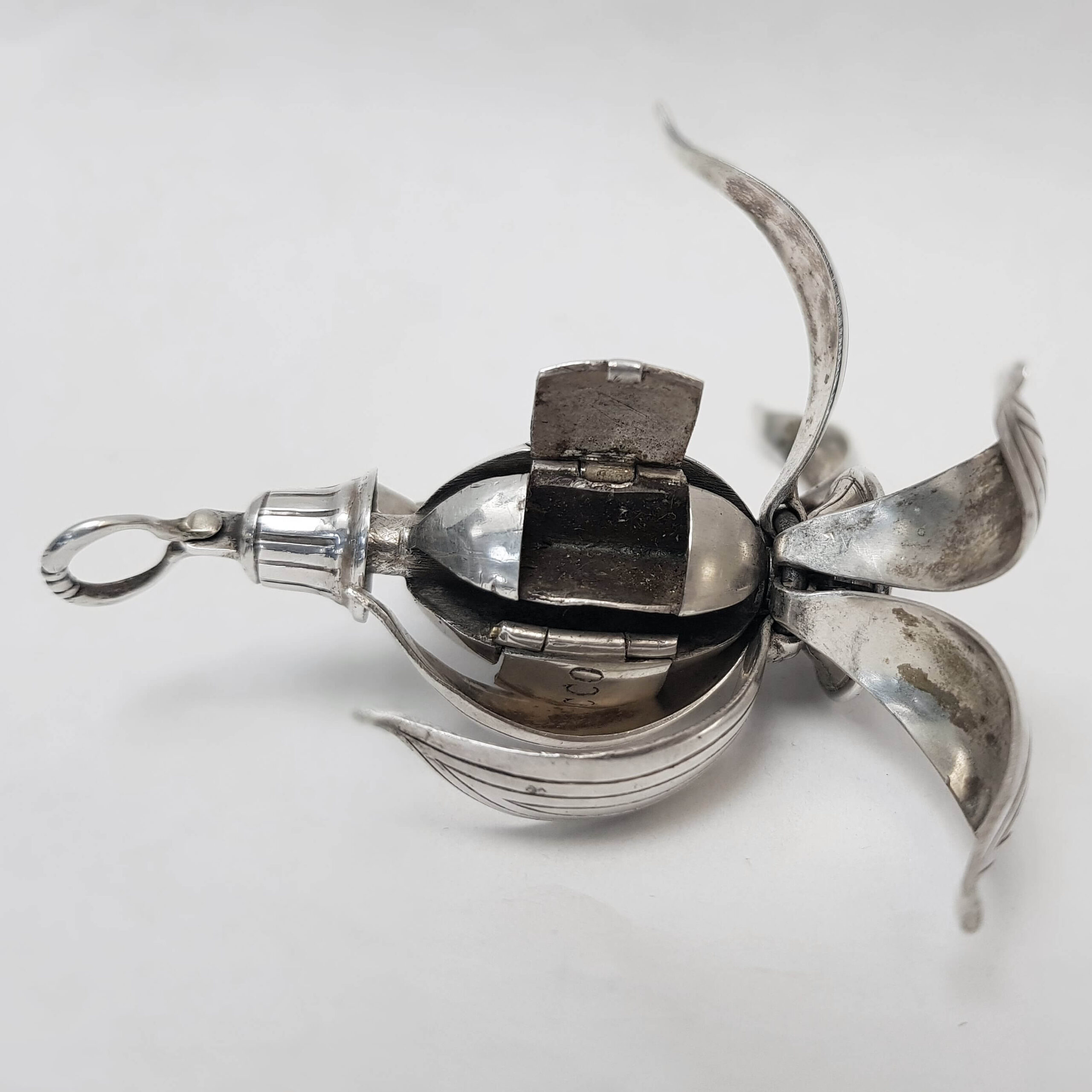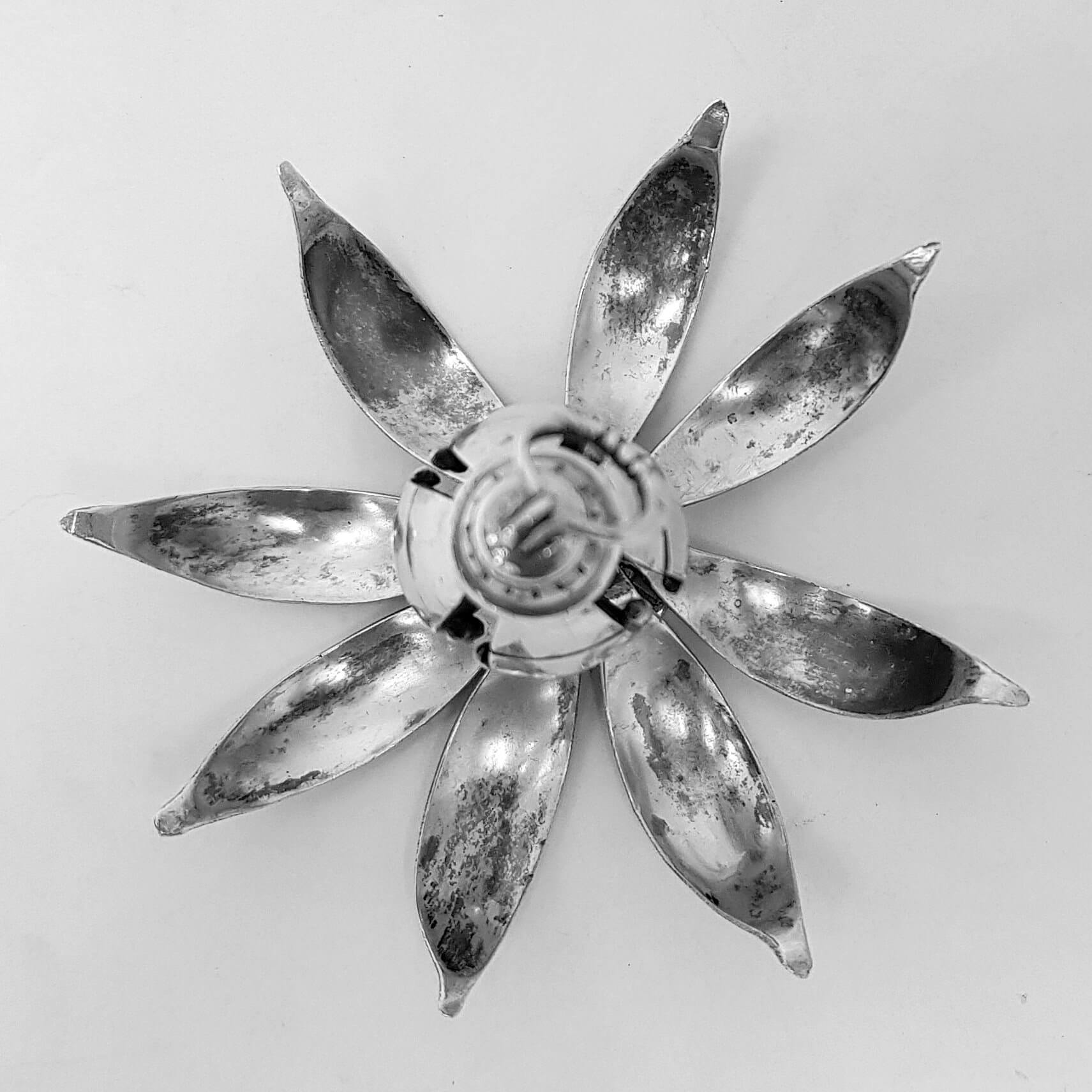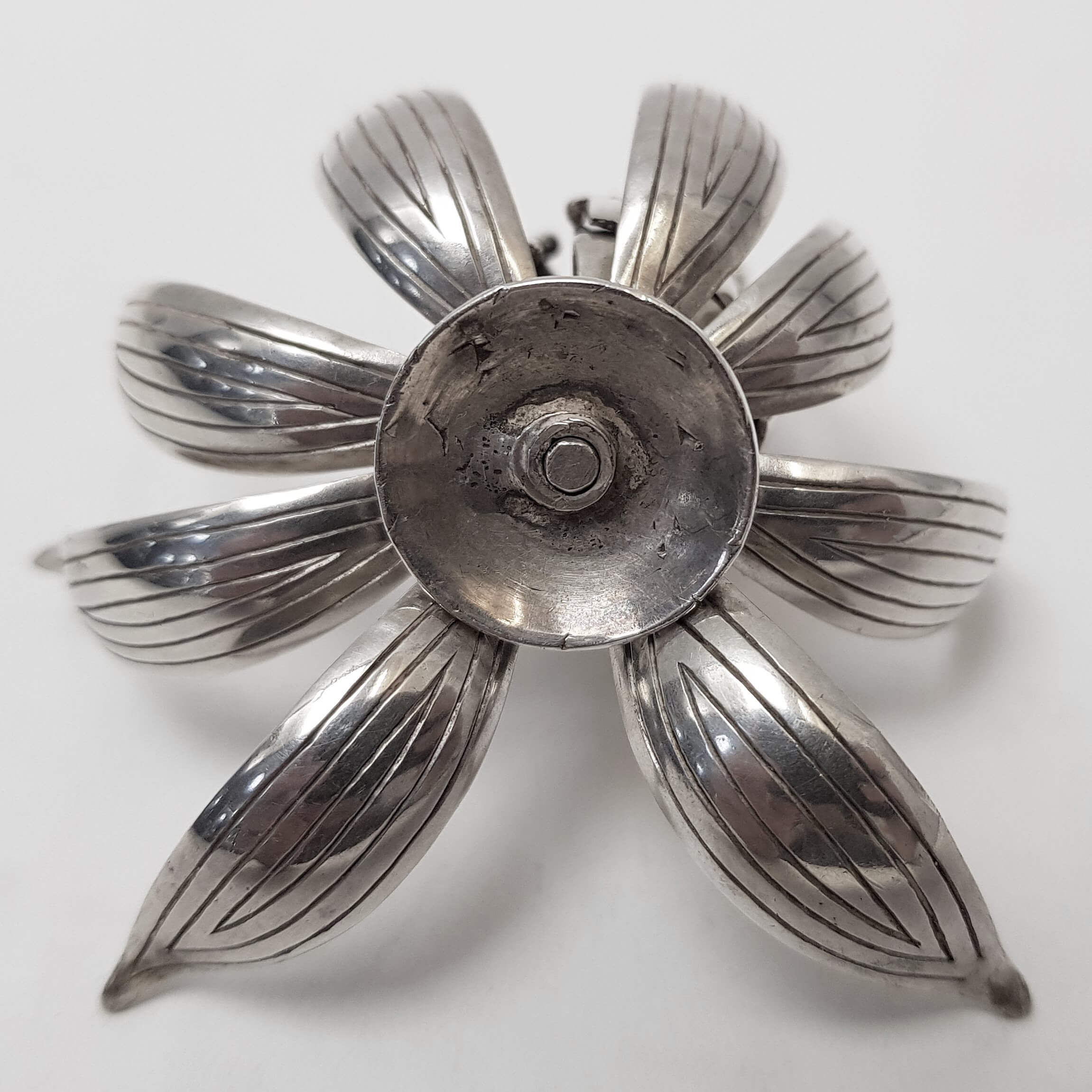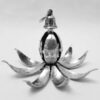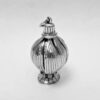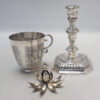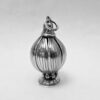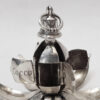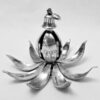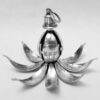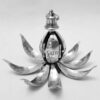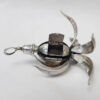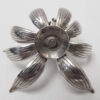17th Century Antique Silver Pomander
SOLD
Stock: 10297
Date: Circa 1650
Country: Italy
An exquisite little historical item dating back to circa 1650. The antique silver pomander of “segmented-apple” form has eight leaf-shaped...
Description
Description
An exquisite little historical item dating back to circa 1650. The antique silver pomander of “segmented-apple” form has eight leaf-shaped loculi which unfold when the bell shaped finial is released/unscrewed. The central section has four compartments, for spice, herbs or perfume, which are fitted with small rectangular hinged doors marked with the Latin names – “Nerdi” for spikenard, “Carvi” for carroway, “Macis” for Mace and “Cocco” for coconut known for its antibacterial properties. The perfume cells still retain traces of the original perfumed wax compound. Weight 33 grams, 1 troy ounce. Height 4.8cm. Spread 6.6cm fully extended. The pomander is made of unmarked silver which is quite usual for a small article of this date. Probably Italian. Circa 1650.
Provenance. Similar examples are on display in the Metropolitan Museum, New York Accession Number: 20.67 and the Science Museum, London, Object Number: A629410; both described as 17th century Italian. Alan Deliebe illustrates a similar pomander in his “Investing in Silver”, page 106, described as Elizabeth I circa 1600.
Literature. A Pomander is a perforated container of aromatic substances, often scents infused in wax. The term pomander first arose during the Middle Ages from the French pomme d’ambre and referred to an aromatic ball made of ambergris, civet, musk, dried flowers, spices and scented oils. It was thought that by inhaling specific aromas or simply carrying them on your person, would cure or prevent serious illness. Shakespeare refers to one as a “pouncet-box” in Henry IV.
The Pomander scent carrier was popular in England and the continent during the 16th and 17th centuries. Usually orb-shaped, with chambers for the herbs and spices, it was designed to be worn around the waist on a rope by wealthy aristocrats. Many paintings of Queen Elizabeth I, notably the famous Darnley Portrait in the National Portrait Gallery in London, depict her wearing finely crafted examples.
Condition
The pomander is still in very good condition and is in fully functional condition. The inner compartments retain old wax residues; the covers all open and close well with a bit of stiffness due to the old wax. The segments fold and unfold easily but it takes a bit of practice to screw the bell finial down to secure the segments in place. The engravings are still crisp.
Maker Information
No maker assigned
Our Guarantee
Customer satisfaction is our primary concern
All silverware on our website is checked thoroughly prior to offering it for sale and every product listing contains a condition report and details of the silver hallmarks.
All items offered on our website include:
- Free Shipping Worldwide
- Tracked and Insured
- 14 day no quibble money back guarantee
- We are accredited members of LAPADA and conform to their strict professional standards
- We dispatch 1-3 days after receiving cleared payments
More detailed information about deliveries, returns and how to pay is available in the Help section at the bottom of this page.
